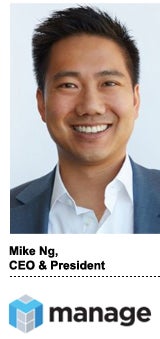 As a matter of course, tech talent flows between companies in Silicon Valley – there are former eBay employees at Facebook, ex-Yahoo execs at Uber, prior Google people at Snapchat – but Twitter seems to be particularly susceptible to departures.
As a matter of course, tech talent flows between companies in Silicon Valley – there are former eBay employees at Facebook, ex-Yahoo execs at Uber, prior Google people at Snapchat – but Twitter seems to be particularly susceptible to departures.
“The Twitter diaspora has been very sad for the company,” said Mike Ng, who left his post as Twitter’s director of mobile sales and operations in March after a little more than a year and a half. He’s now CEO and president of Manage, a mobile demand-side platform (DSP) that happens to be a big buyer on MoPub, Twitter’s mobile exchange.
In January, a number of top Twitter executives also flew the coop, including Kevin Weil, the former SVP of product who moved into a product chief role at Instagram. But there’s also been movement at all levels of the organization.
A Financial Times analysis of LinkedIn profiles found that more than 450 employees had left Twitter between July 2014 and July 2015, including execs that came on board from the MoPub acquisition.
Twitter’s recent struggles have been well–documented, which could account for some of the attrition. But it’s also true that Twitter isn’t a baby chick anymore: It’s a 10-year-old company, and according to research from the Society for Human Resource Management, the average tenure at a tech company is roughly three years.
Rather than fleeing the scene, many, like Ng, are just looking for the next interesting opportunity. Ng, an ad tech vet, has a number of strategic leadership roles under his belt, including GM of mobile ad solutions at Criteo and VP of business development at BlueKai.
At Manage, Ng wants to expand the DSP’s capabilities to help marketers take better advantage of the advertising APIs offered by social platforms, including Twitter, Pinterest and, eventually, Snapchat. These platforms are “very different beasts” and need to be treated as such, he said.
“I think marketers are still having a hard time understanding the nuances between a platform as rich as Twitter versus Facebook,” Ng said. “And as a result, I saw this as a looming market need.”
Ng is hoping to position Manage as a marketing solution to fill that niche, and that’s where the extensive network of ex-Twitter employees comes in handy. He’s calling on his connections.
“It’s a side benefit,” Ng said. “We all know people at Pinterest, at Snapchat and elsewhere. It doesn’t necessarily give us a leg up, but it does help us start having conversations with them.”
Founded in 2011, Manage has more than 36 employees spread across its Mountain View, Calif., headquarters and a satellite office in the UK. Clients include Machine Zone, Supercell, Verizon, Subway, Uber, Lyft, Volvo and Electronic Arts. The company is completely bootstrapped and claims to be profitable.
AdExchanger caught up with Ng one month into his new post.
AdExchanger: Why leave Twitter and move to Manage?
MIKE NG: One of the reasons I was familiar with Manage was because of my role at Twitter, where I ran the app install business. My team was responsible for working with all of the game developers and mobile-focused brands like Uber and Lyft, and also working with the sales team globally to make sure the other folks – media, entertainment, travel, retail – also understood the Twitter’s app install product.
I was aware of which DSPs were buying on MoPub through their public list of DSP partners, including Manage, which has been a longtime buyer. I knew the technology was sound. I also saw a bigger opportunity there to include more programmatic social media ad inventory.
Why are other people leaving Twitter?
It’s unfortunate that a lot of people have left. Twitter has a tough hill to climb right now and when employees hit the three- or four-year mark, that usually feels like a good time to transition out anyway. But no matter what the naysayers and investors say about MAU (monthly active user) growth, revenue and sales, Twitter is still an appealing place to work. It also has great people, which is why the ad tech market finds value in hiring Twitter alums.
It’s rare that a company doesn’t have an ex-Twitter person, which is handy for Twitter alums like myself because we have a connection and a common bond.
Twitter just released its results for the first quarter on Wednesday and it was pretty much the same story as it’s been for a while: slow MAU growth and soft advertiser interest. Could the TellApart acquisition help with that?
Prior to Twitter, I came from Criteo, so I know retargeting. When I was at Twitter and we bought TellApart, I was a little perplexed because TellApart is 99.9% about desktop retargeting and Twitter’s O&O business is about 90% in-app, so there’s not much overlap. Yes, they’re doing work around dynamic ad personalization, but I don’t think that’s the thing to be most bullish about. More than $500 million just for personalization? Probably not.
Twitter is clearly making a big bet around brands, things like content licensing deals with the NFL, not performance marketing. But Twitter could use its first-party data to bridge desktop to in-app to the mobile web – the cross–device piece. That part could very well make the acquisition worth it. But how will it be executed? We’ll have to wait and see.















